This article on Ed Roth’s Orbitron was originally published in the January 2010 issue of Street Machine
Ed Roth was many things: pin-striper, artist, hot rodder, opportunist, publisher and the godfather of custom culture. By his hand came a body of work that included hot heartfelt innovative rods built today can be successful without a smattering of Roth-like thinking.
Roth’s business was predicated on his show cars and commercial tie-ins, most notably his deal with Revell model kits. Revell’s renditions kept Roth’s pay cheques flowing, and considerable sums they were – until The Beatles stepped onto American soil and young men swapped their glue and modelling knives for guitars and microphones.
Roth started on Orbitron in 1964. Mysterion, Outlaw, Rotar and the Beatnik Bandit had established his reputation and he was a huge draw at car shows. Orbitron should have been business as usual. It wasn’t.
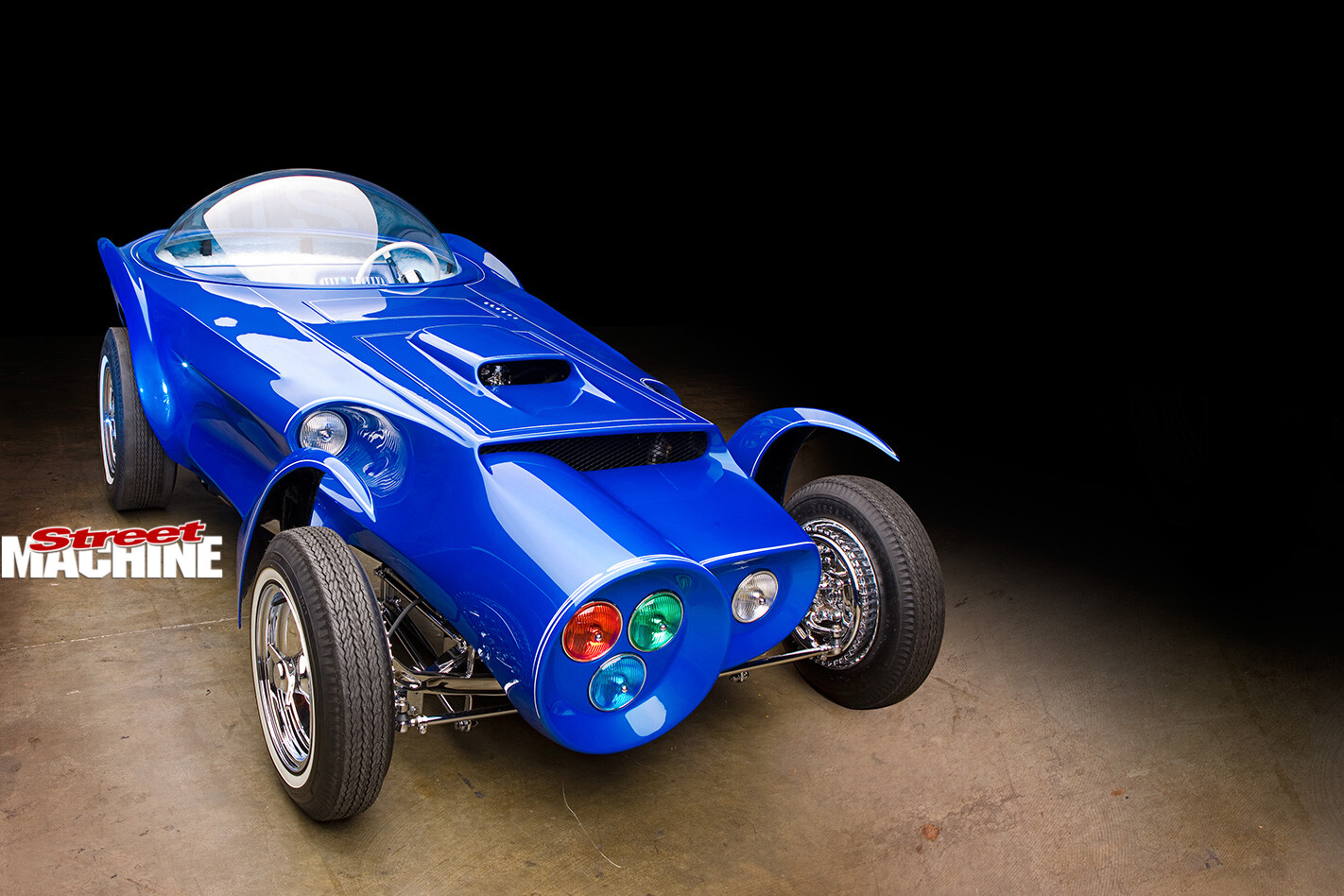 “Roth worked in fits and starts,” says Ed ‘Newt’ Newton, original designer of the Orbitron. “He’d know where a new car would debut because he’d have made a deal with a show promoter; remember, Roth’s cars were paid-for attractions. Other contracts such as his deal with Revell and magazine deadlines influenced how he’d work. As time went on, his obligations to Revell became a major factor in when a car was completed.”
“Roth worked in fits and starts,” says Ed ‘Newt’ Newton, original designer of the Orbitron. “He’d know where a new car would debut because he’d have made a deal with a show promoter; remember, Roth’s cars were paid-for attractions. Other contracts such as his deal with Revell and magazine deadlines influenced how he’d work. As time went on, his obligations to Revell became a major factor in when a car was completed.”
Newton joined Roth halfway through the Orbitron build. Having qualified as an automotive stylist, Newt had paid his way painting and selling his own T-shirts. Roth was well aware of the young designer’s talents and over a period of time made him several offers, all of which Newt turned down. Roth finally hit on a figure which worked for both parties and Newt was in, but he was in for a shock! “One of my first projects was Orbitron,” he recalls. “When I arrived the plaster was starting to go onto the buck and the chassis had, more or less, been cobbled together. It was my job to make the car look good.”
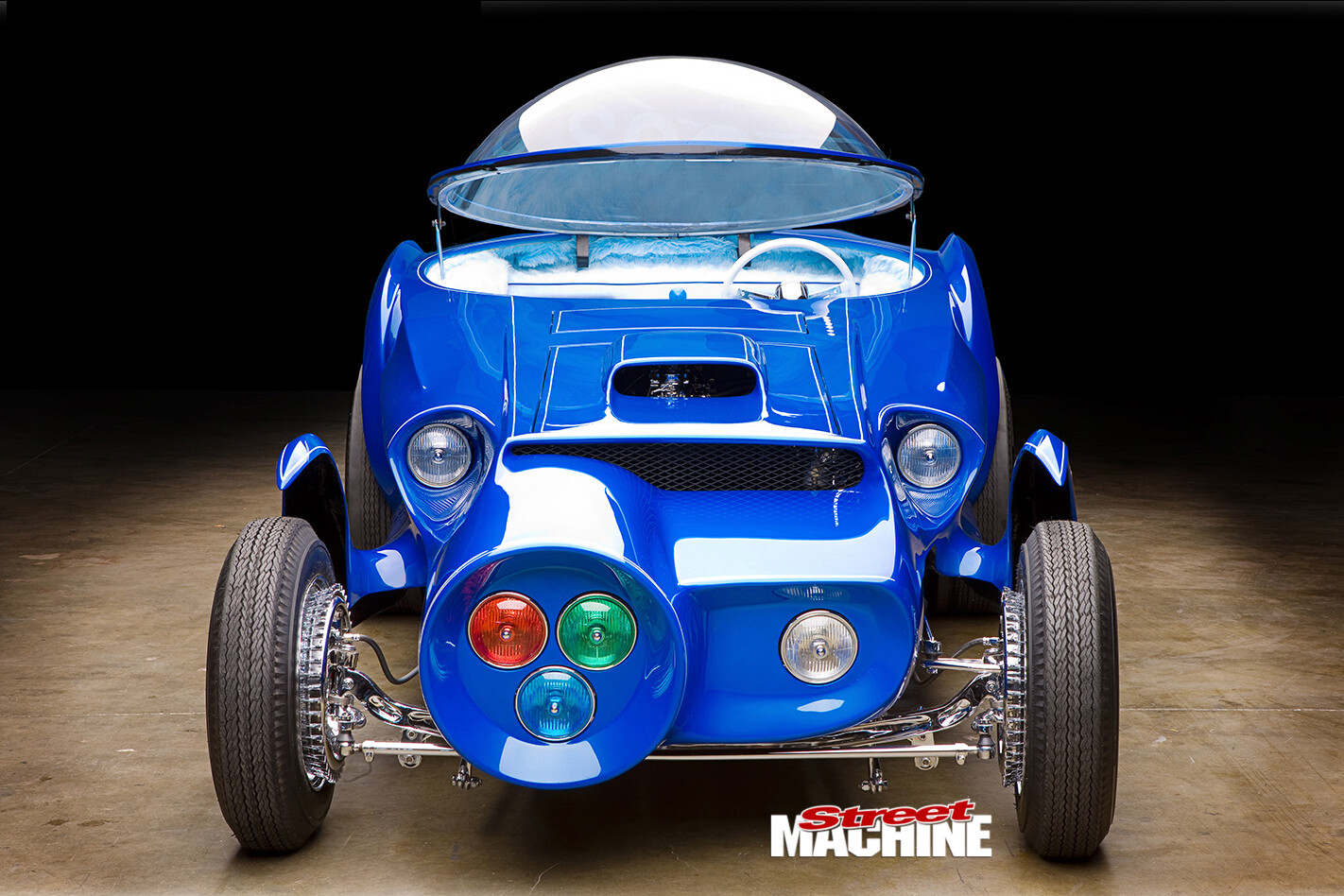 Roth was moving into asymmetrical design but Orbitron also calls to mind a slingshot dragster. To further complicate matters, Roth discovered that if he mixed green, blue and red light, he would get white.
Roth was moving into asymmetrical design but Orbitron also calls to mind a slingshot dragster. To further complicate matters, Roth discovered that if he mixed green, blue and red light, he would get white.
“Roth really got off on that,” Newton laughs.
Then he thought of a way to do that on a car, and decided that on the other side of the body there should be a normal headlight. This became an asymmetrical statement. I guess he was trying to say that three lights are as good as one. This drove the Orbitron’s styling.”
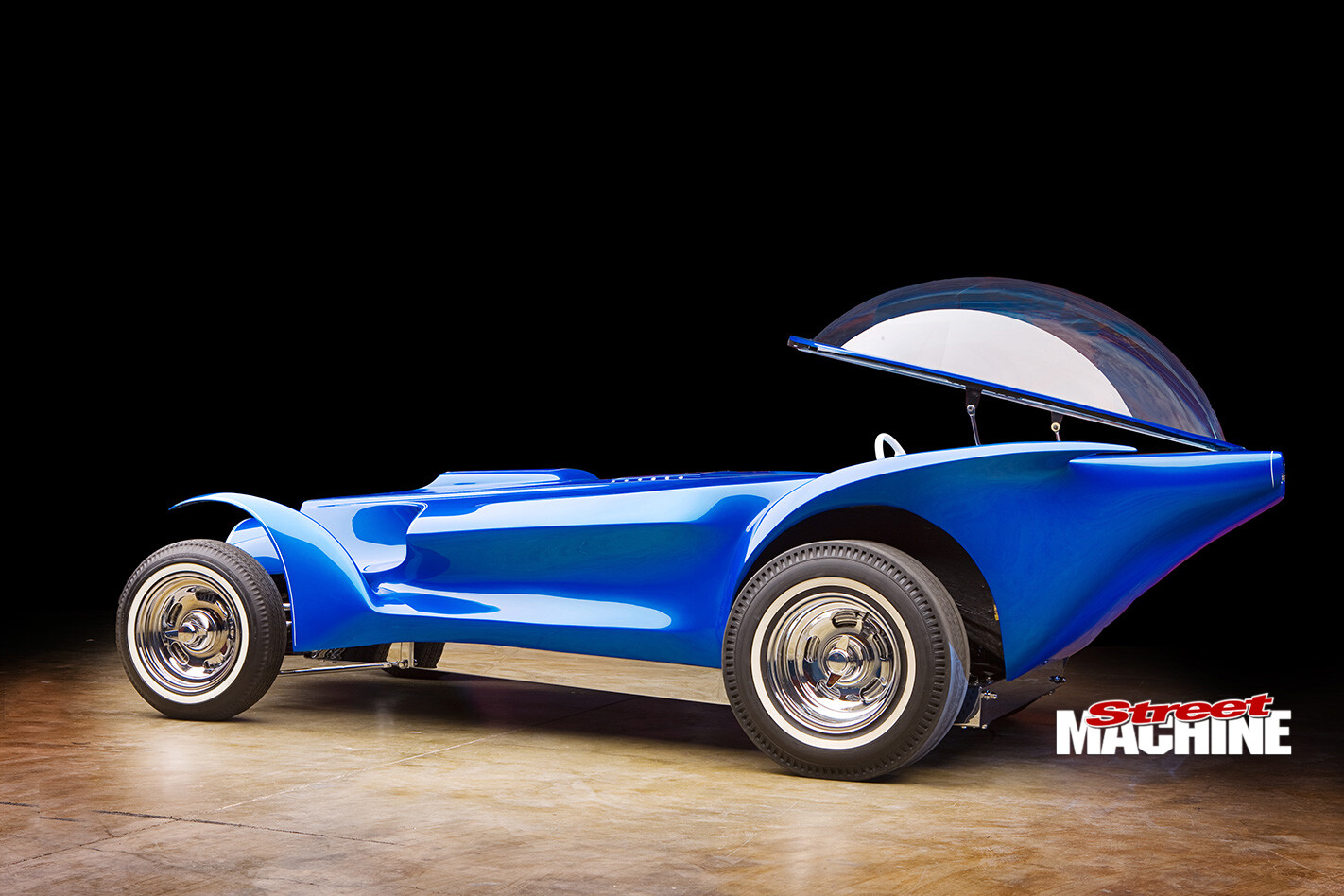 At this stage everything seemed to be going in the right direction. As he had done with the Beatnik Bandit, Roth was attempting to tie together the laid-bare engineering approach of the hot rod and the streamlined stylisation of Detroit’s dream cars. However, where the Beatnik Bandit had been an outrageous success, Orbitron was a failure in Roth’s eyes.
At this stage everything seemed to be going in the right direction. As he had done with the Beatnik Bandit, Roth was attempting to tie together the laid-bare engineering approach of the hot rod and the streamlined stylisation of Detroit’s dream cars. However, where the Beatnik Bandit had been an outrageous success, Orbitron was a failure in Roth’s eyes.
“The idea of exposing the engine in the Beatnik Bandit was what helped make it a winner — the engine said ‘hot rod’ while the rest of the bodywork was fairly smooth and flowing,” Newton says.
“Unfortunately, when we were doing Orbitron, Roth used the engine out of his own 1955 Chevy. The problem is when it came to finalising the bodywork all we had for the Chevy was a tri-power set-up, which Roth was kind of embarrassed about. In fact, the original sketch I did for the car featured the three carb air filters projecting through the bodywork.”
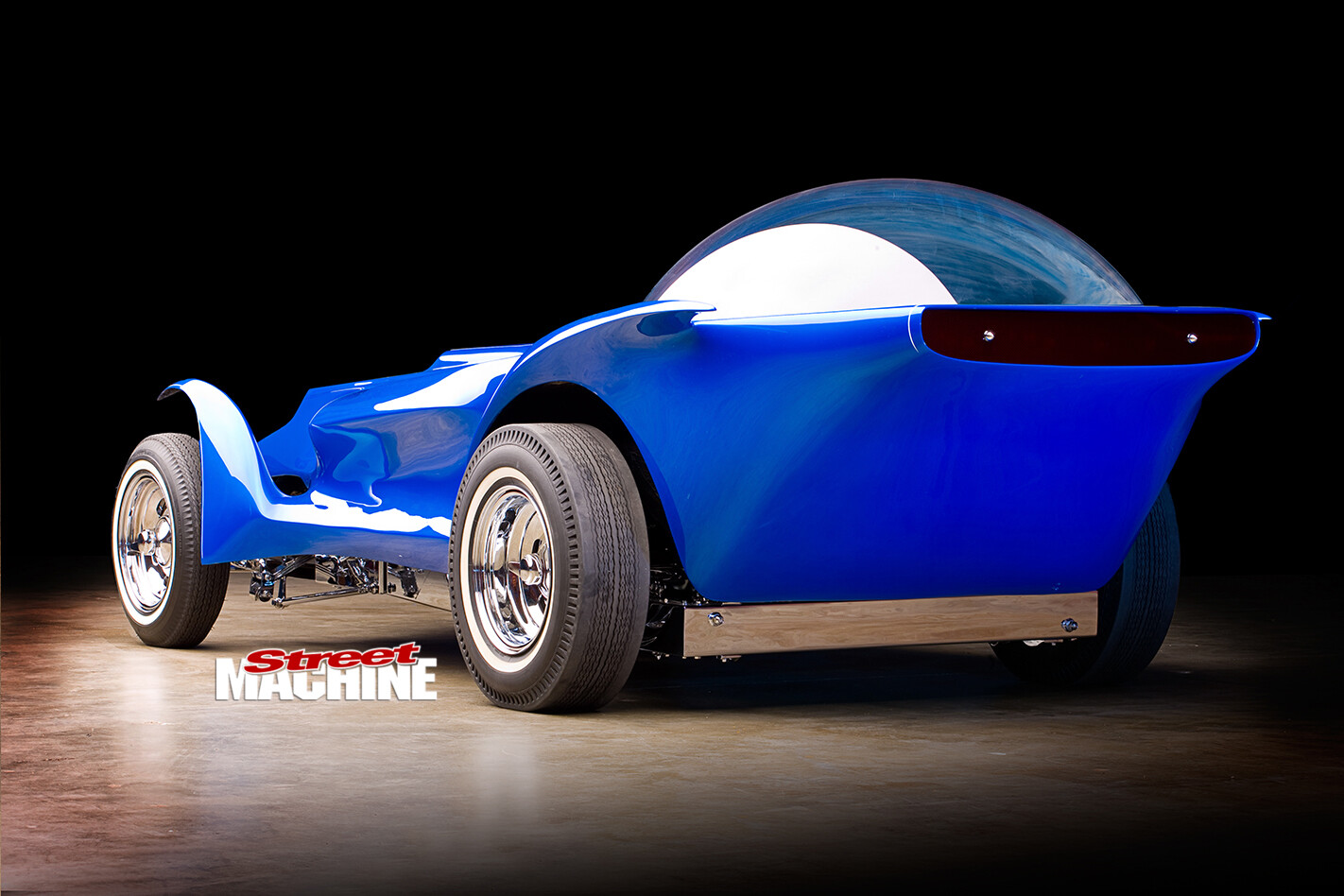 While rivals were using more impressive engines with up to six carbs or even superchargers, necessity meant Roth was cutting corners on Orbitron, which ultimately forced him into making the key decision that would doom the project — the engine would be enclosed.
While rivals were using more impressive engines with up to six carbs or even superchargers, necessity meant Roth was cutting corners on Orbitron, which ultimately forced him into making the key decision that would doom the project — the engine would be enclosed.
What seemed like a good idea at the time did not translate to the show circuit, where the Orbitron was deemed not to be impressive enough. This was compounded by the slingshot dragster styling, because what actually made dragsters so popular was their exposed engines.
Roth soon tired of the Orbitron, stating that he should have named it Titanic instead. He claimed to have sold the Orbitron to a buyer from Texas in 1969 but rather than heading for the Lone Star state, the car actually went to fellow customiser Darryl Starbird. From here on in the story becomes far less certain.
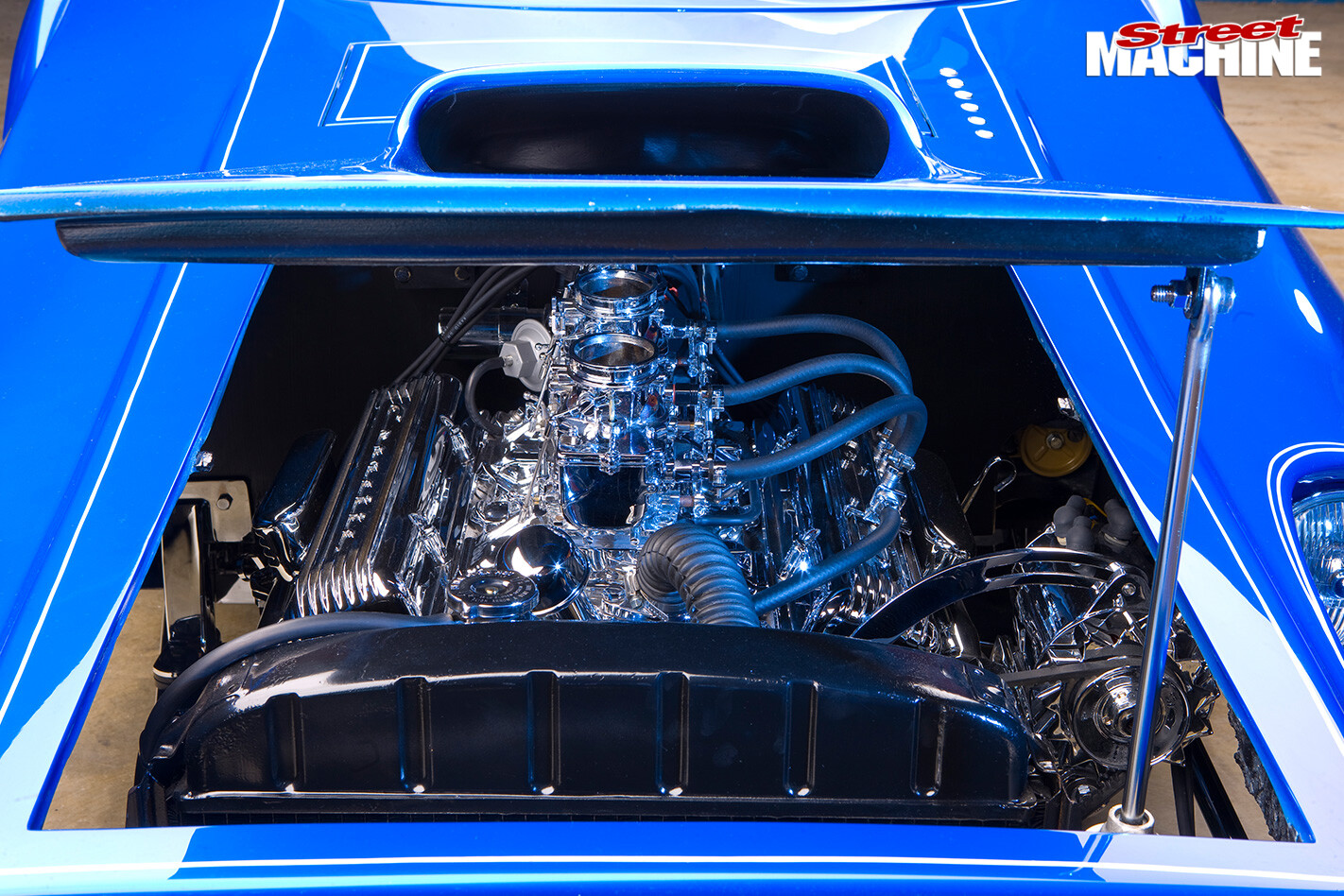 What is known is that sometime after 1972, Orbitron made its way south of the border into Mexico, where it appears to have stayed.
What is known is that sometime after 1972, Orbitron made its way south of the border into Mexico, where it appears to have stayed.
Fast forward to 2006 and interest in Roth’s life and work had never been stronger. The Detroit Autorama staged its own tribute, with a display that put almost all the existing Roth cars in the same place for the very first time. Hard on the heels of Detroit came the Petersen Museum’s own tribute to ‘Big Daddy’, featuring Rotar, now owned by Galpin Auto Sports vice president Beau Boeckmann.
“All the Roth cars were either at the Petersen or were accounted for,” Beau says. “But I’d heard that Orbitron had been lost somewhere in Texas. After the Petersen tribute I made a catalogue of all the current Roth owners and where all the cars were located. I decided we had to find the car but what I didn’t know at the time was that people had been searching for the car for years.”
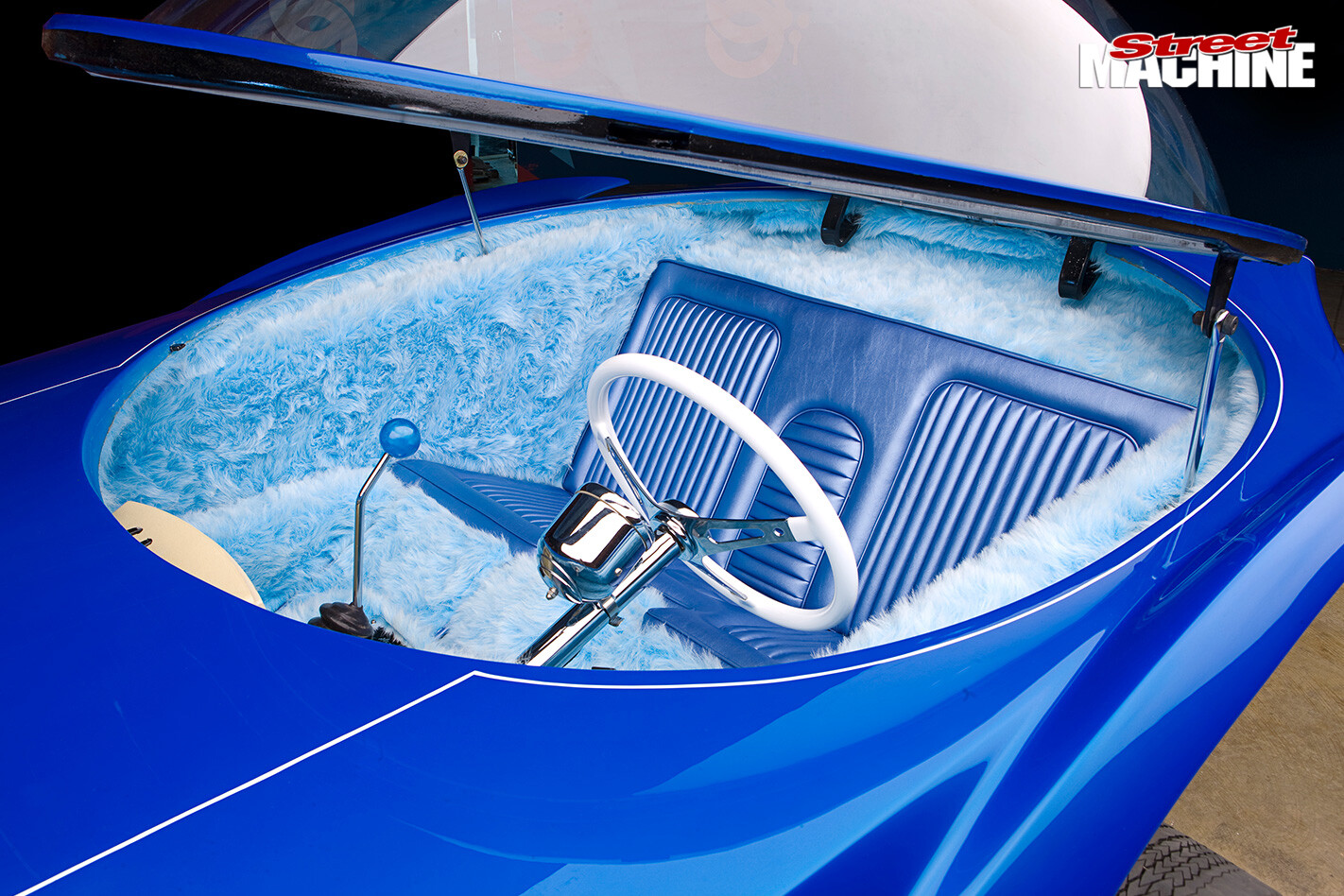 One of these people was Michael Lightbourn. He has a reputation for unearthing muscle cars and early Fords, particularly in Mexico. Michael was aware that Orbitron was south of the border but his network of informants kept coming up empty, until word reached him of a car with a glass-fibre body and a Corvette engine. Photos soon confirmed that it was indeed Orbitron sitting outside an adult bookstore.
One of these people was Michael Lightbourn. He has a reputation for unearthing muscle cars and early Fords, particularly in Mexico. Michael was aware that Orbitron was south of the border but his network of informants kept coming up empty, until word reached him of a car with a glass-fibre body and a Corvette engine. Photos soon confirmed that it was indeed Orbitron sitting outside an adult bookstore.
Beau soon got wind of this discovery and a period of negotiation ensued as he established his credentials as a worthy custodian of Orbitron. Finally the day came when the car returned to California for restoration at Galpin Auto Sport.
“There are plenty of restoration houses that have worked on Ferraris and Bugattis but that’s not what you want when you are restoring a one-off Roth car,” Ed Newton asserts. He played a major part in Orbitron’s rebirth. “The knowledge of what show cars were all about back in the 60s lies elsewhere.”
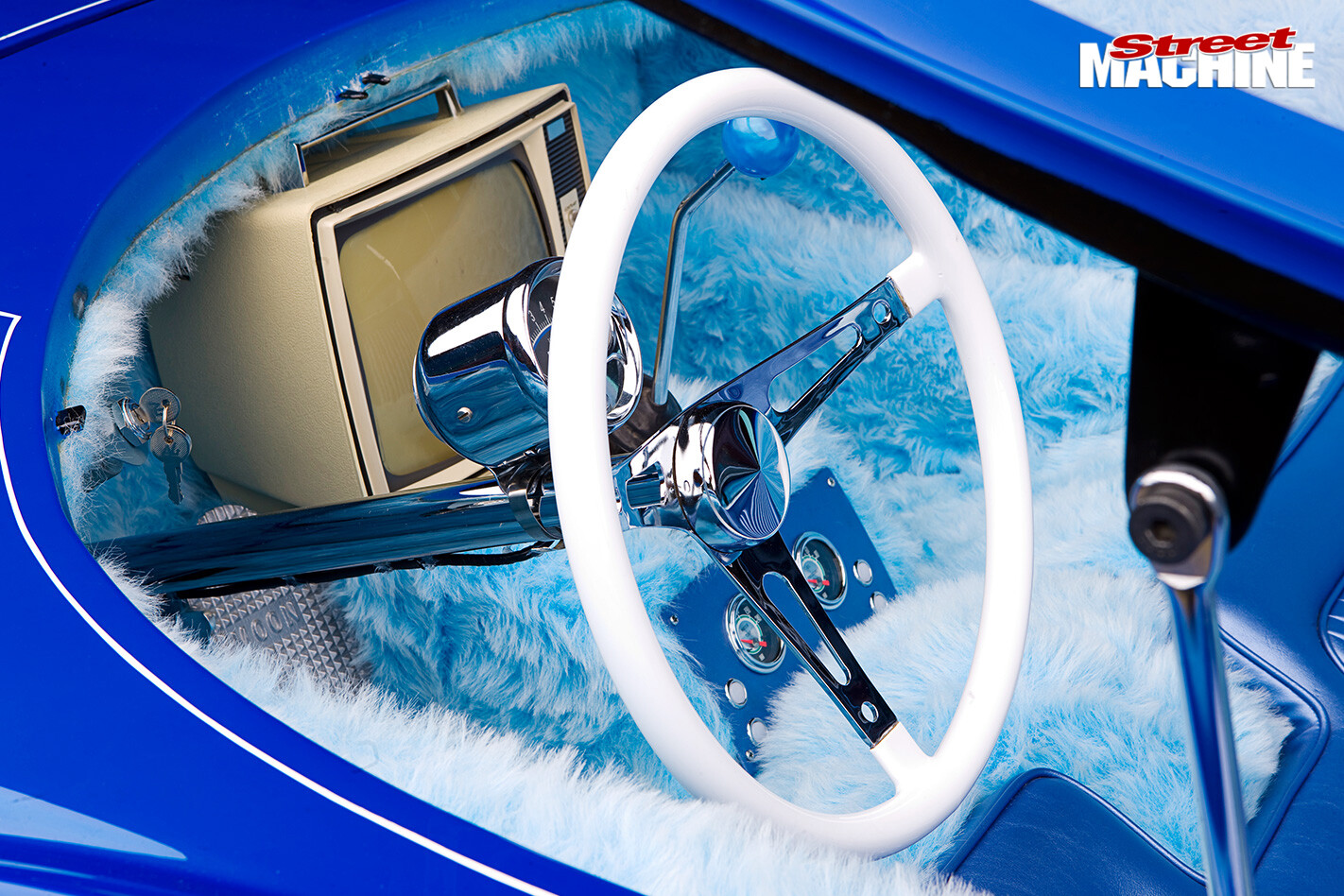 Beau agrees. “I wanted the perfect restoration of an imperfect car,” he laughs. “I wanted to be able to lay the picture from 1964 over today’s picture and not be able to tell the difference. There are things we had to make better such as the chassis, which was disintegrating. What we didn’t want to do was correct Roth’s original mistakes.”
Beau agrees. “I wanted the perfect restoration of an imperfect car,” he laughs. “I wanted to be able to lay the picture from 1964 over today’s picture and not be able to tell the difference. There are things we had to make better such as the chassis, which was disintegrating. What we didn’t want to do was correct Roth’s original mistakes.”
Orbitron left Mexico minus its bubble top, nose piece, seats, lights and hood. It had also been painted primer black. Beau assembled a team including Ed Newton, Larry Watson, the original painter, Joe Perez, who upholstered it, and Dave Shuten, who built the recreation of the twin-engined bubble-top Mysterion.
The key to the restoration process was deciding how many of Roth’s fingerprints to retain and where to improve. For example, the one-piece Lucite tail-light covers a string of Christmas tree lights, one of which Roth mounted lower than the rest. Since he created the car this way, that was how it had to remain.
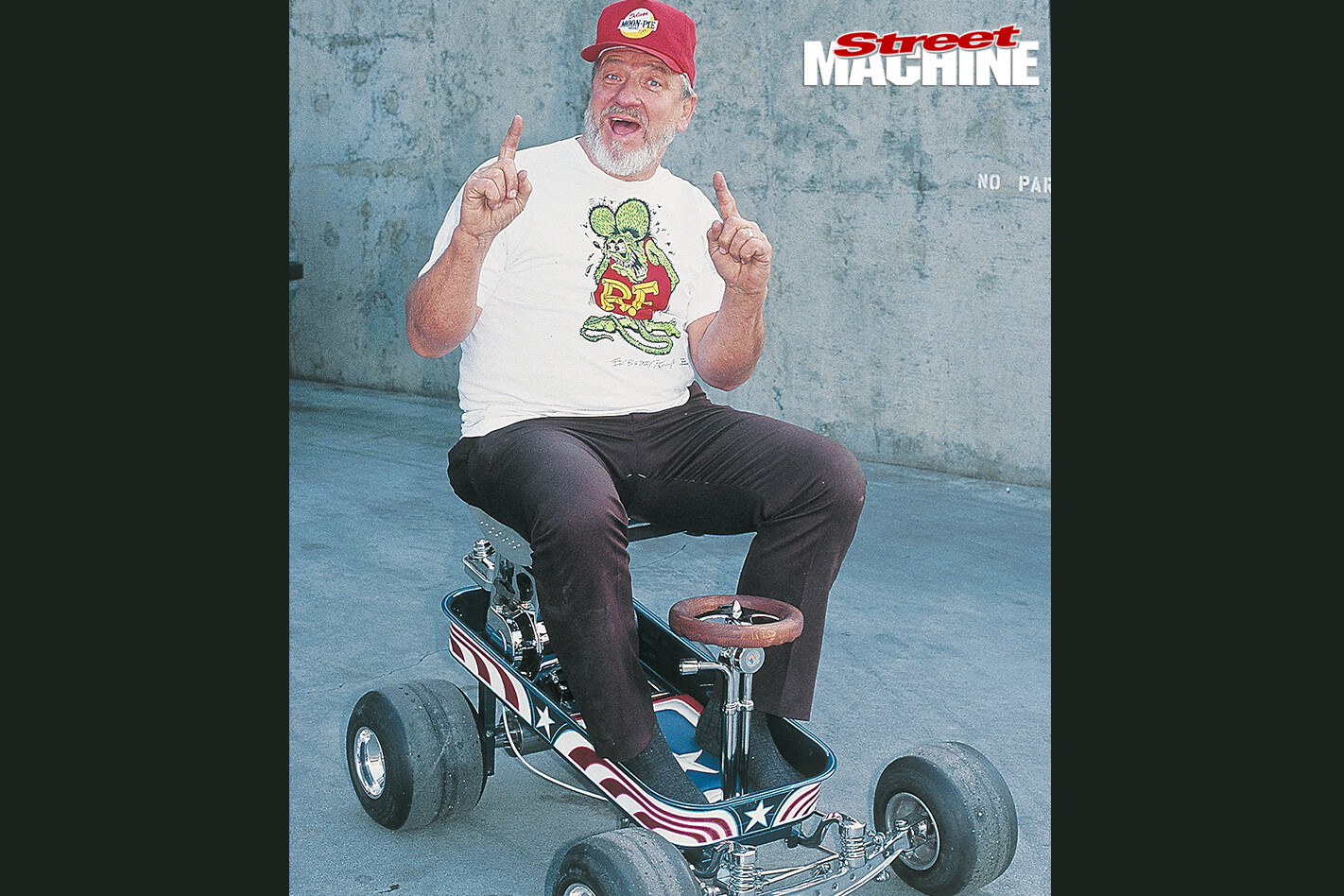 Details such as this are everywhere on Orbitron, and it was those details that proved trickiest to get right. As the Galpin team began the restoration, big-ticket items such as the bubble-top looked like they would present huge hurdles. In fact the canopy proved much simpler than the 11-inch black and white GE one-finger model television.
Details such as this are everywhere on Orbitron, and it was those details that proved trickiest to get right. As the Galpin team began the restoration, big-ticket items such as the bubble-top looked like they would present huge hurdles. In fact the canopy proved much simpler than the 11-inch black and white GE one-finger model television.
“That’s right,” Beau says, “we kept as many of the original pieces as possible, such as the engine and transmission. Luckily there was one of everything left. I had one original tyre and these things haven’t been made for 40 years. We were able to take a mould and get the same tread. And there was one spinner left, which again we were able to reproduce.
“As for the TV, that took many people many months on eBay until at last we found it. But find it we did, and it still works.”
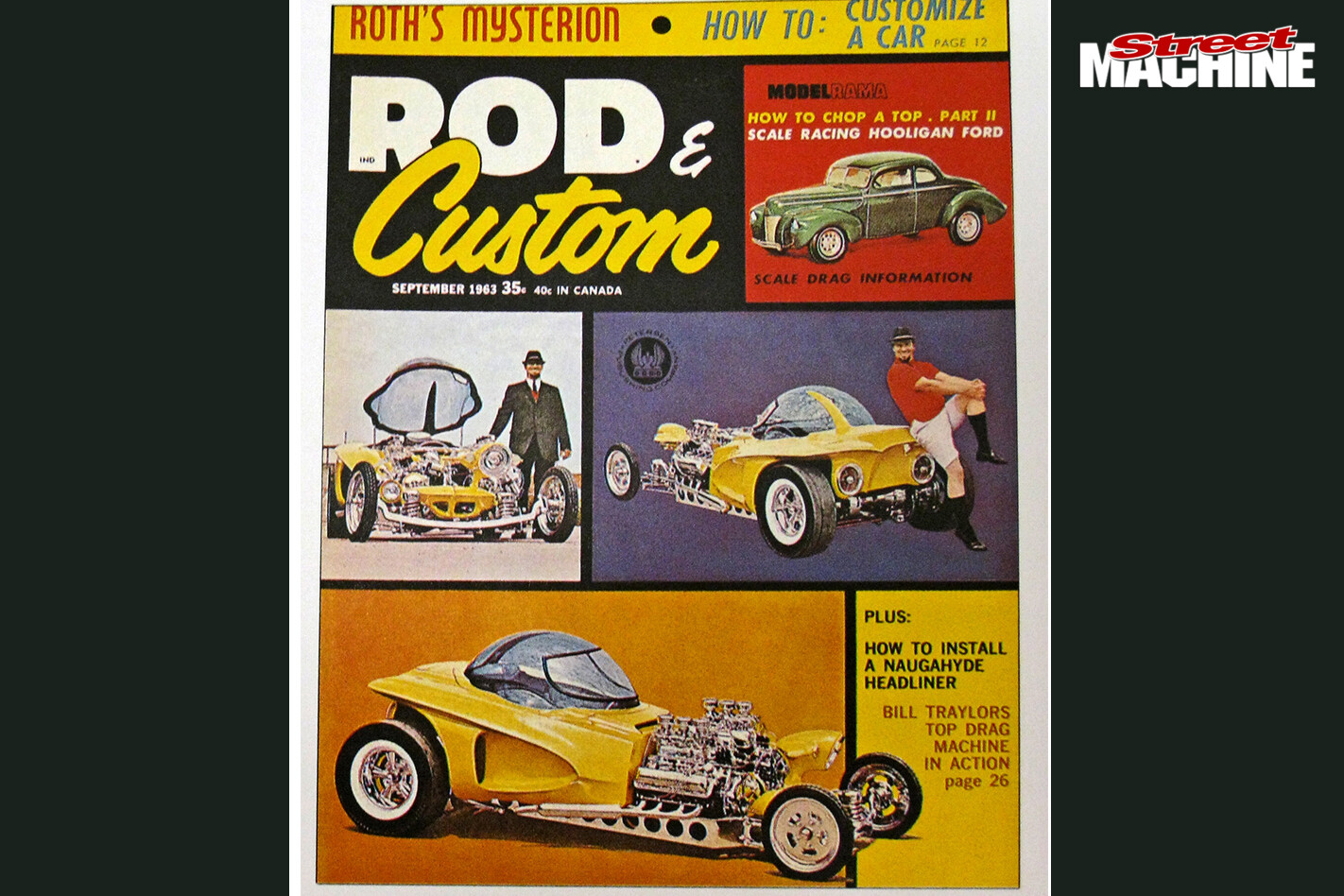 They say fortune favours the brave and Roth was a brave and visionary car builder. It does the heart good to see this lost piece restored so faithfully and with such compassion.
They say fortune favours the brave and Roth was a brave and visionary car builder. It does the heart good to see this lost piece restored so faithfully and with such compassion.
Orbitron may have failed in its creator’s eyes, and it didn’t wow the show-going public of the mid-60s but this fibreglass ugly duckling has been reborn beautiful. Now if only Mysterion would resurface.
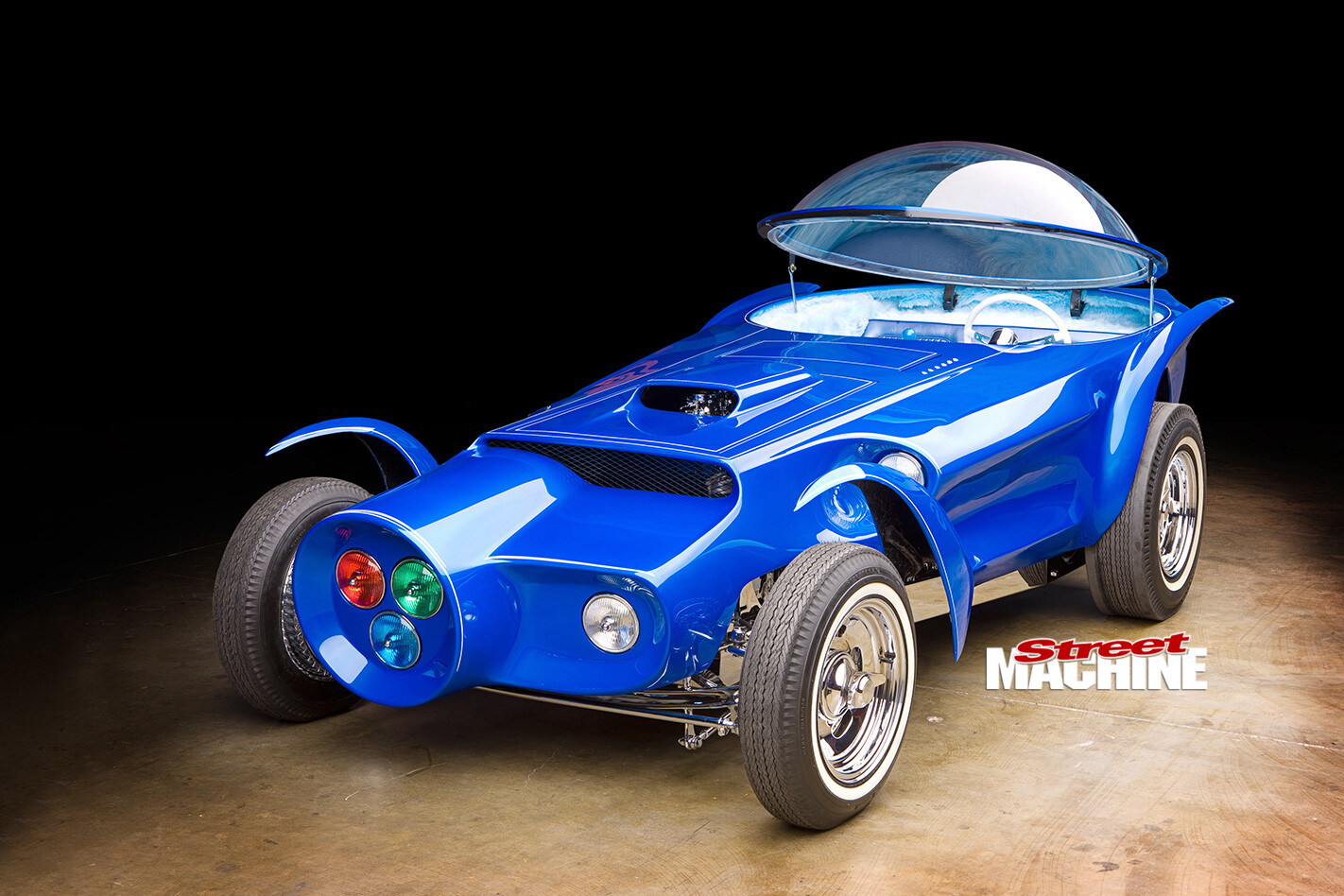
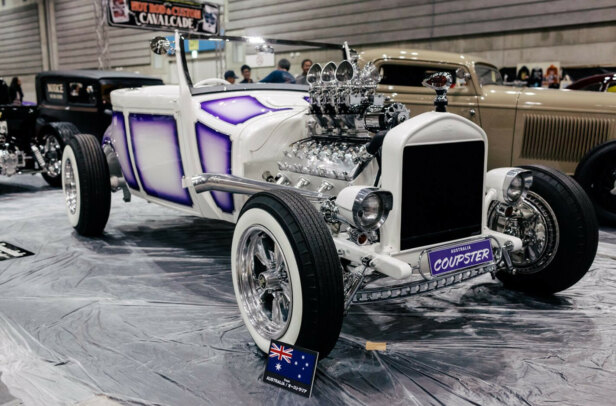
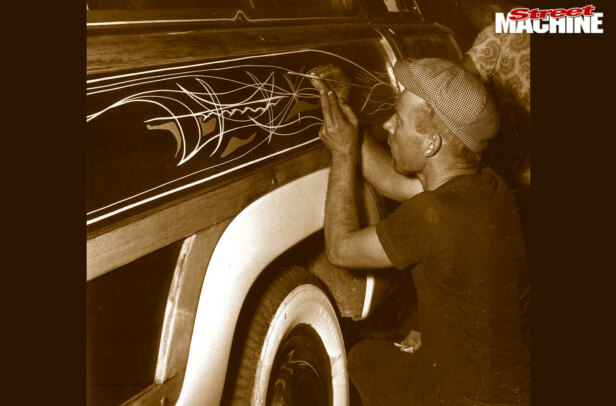
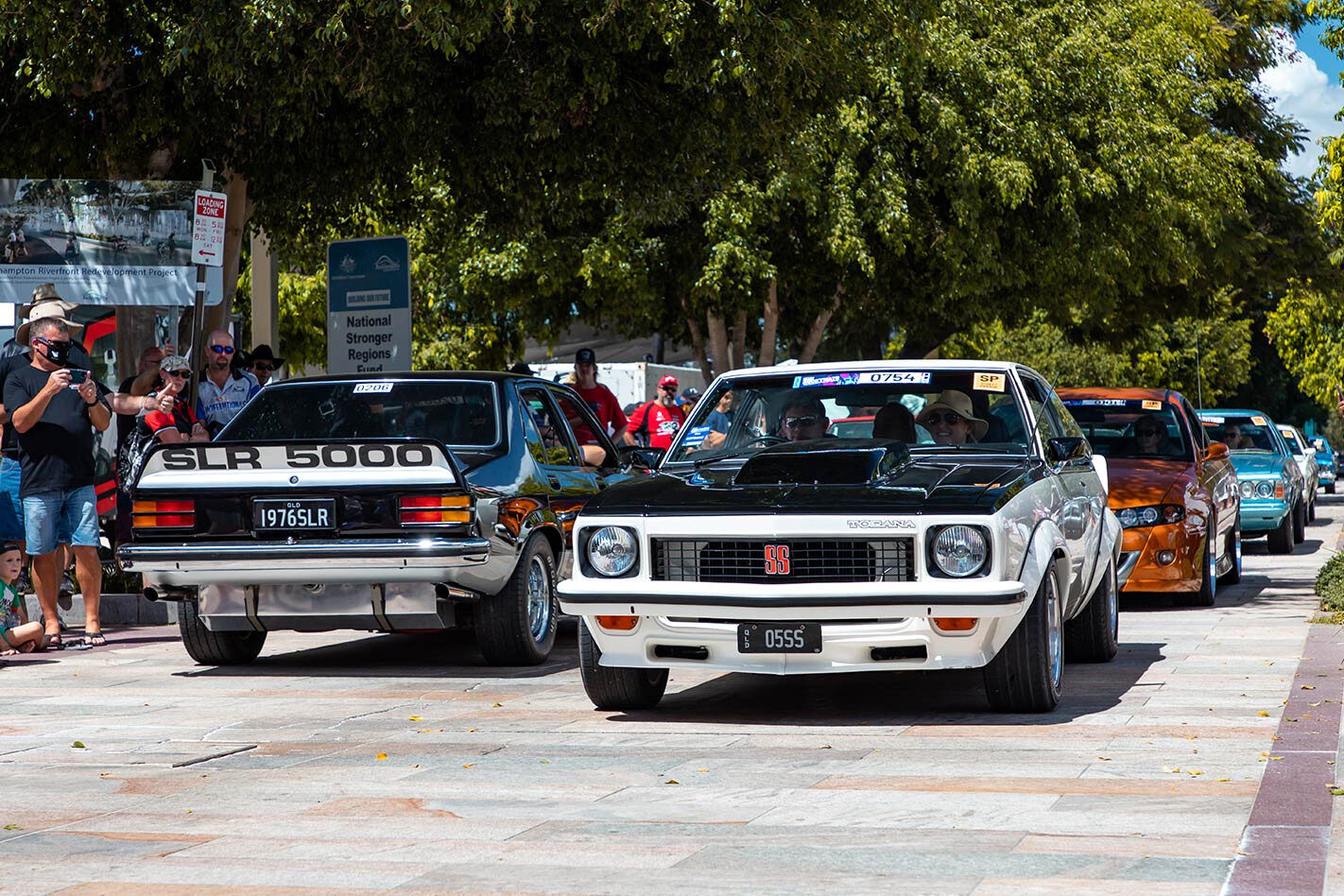
Comments